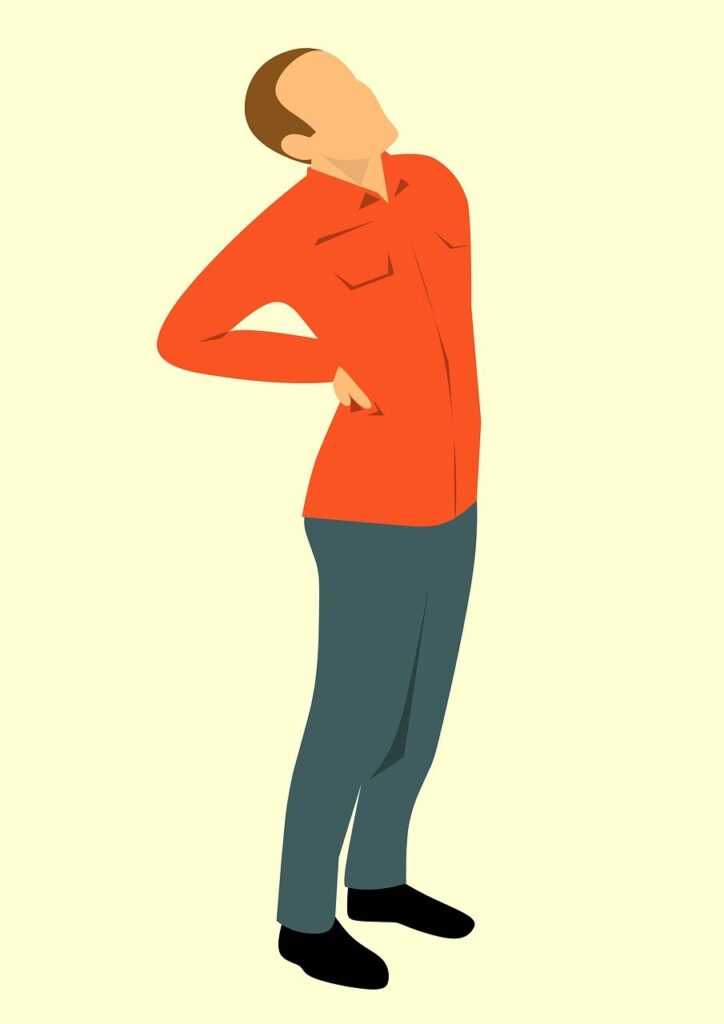Deciphering Back Pain: Unveiling Causes, Symptoms, and Treatment
What is Back Pain? Back pain is a common musculoskeletal condition characterized by discomfort, tension, or soreness in the muscles, bones, or nerves of the back. It can range from mild, intermittent discomfort to severe, debilitating pain that interferes with daily activities.
Types of Back Pain Back pain can be classified into several types, including:
- Acute Back Pain: Short-term pain lasting for a few days to a few weeks, often resulting from injury or strain.
- Chronic Back Pain: Persistent pain lasting for three months or longer, often associated with underlying medical conditions such as arthritis or degenerative disc disease.
- Radicular Pain: Pain that radiates from the spine into the extremities, commonly caused by compression or irritation of spinal nerves (e.g., sciatica).
Symptoms of Back Pain Symptoms of back pain may vary depending on the underlying cause and severity but can include:
- Dull, aching sensation in the back
- Sharp or stabbing pain with movement
- Limited flexibility or range of motion
- Muscle spasms or stiffness
- Radiating pain into the buttocks, legs, or feet
- Numbness or tingling sensation
Causes of Back Pain Back pain can be caused by various factors, including:
- Muscle Strain: Overuse, improper lifting techniques, or sudden movements can strain the muscles and ligaments of the back, leading to pain and discomfort.
- Structural Problems: Conditions such as herniated discs, spinal stenosis, or arthritis can affect the alignment and stability of the spine, causing pain.
- Injuries: Traumatic injuries such as fractures, sprains, or strains can damage the structures of the back and lead to pain.
- Poor Posture: Prolonged sitting, standing, or repetitive activities with poor posture can contribute to muscle imbalances and back pain.
- Medical Conditions: Underlying medical conditions such as fibromyalgia, osteoporosis, or kidney stones can cause or exacerbate back pain.
Risk Factors for Back Pain Risk factors for back pain may include:
- Age: Older adults are more prone to developing back pain due to age-related changes in the spine and muscles.
- Sedentary Lifestyle: Lack of regular exercise or physical activity can weaken the muscles and increase the risk of back pain.
- Obesity: Excess weight can strain the spine and increase pressure on the discs, leading to back pain.
- Smoking: Smoking can impair blood flow to the spine and hinder the body’s ability to heal, increasing the risk of back pain.
- Occupational Factors: Jobs that involve heavy lifting, repetitive movements, or prolonged sitting or standing can increase the risk of back pain.
Diagnosis of Back Pain Diagnosing the underlying cause of back pain typically involves:
- Medical History: A healthcare provider will review the patient’s medical history, symptoms, and risk factors for back pain.
- Physical Examination: A physical examination may be performed to assess the range of motion, strength, and reflexes of the back and extremities.
- Imaging Studies: Imaging tests such as X-rays, MRI, or CT scans may be ordered to evaluate the structures of the spine and identify any abnormalities or injuries.
Pharmacokinetics and Pharmacodynamics Pharmacokinetics refers to how medications used to treat back pain are absorbed, distributed, metabolized, and excreted by the body, while pharmacodynamics refers to how these medications exert their effects on pain perception and inflammation.
Pharmacological Treatment Pharmacological treatment options for back pain may include:
- Nonsteroidal Anti-Inflammatory Drugs (NSAIDs): Over-the-counter or prescription NSAIDs such as ibuprofen, naproxen, or diclofenac can help relieve pain and reduce inflammation.
- Muscle Relaxants: Medications such as cyclobenzaprine or methocarbamol may be prescribed to reduce muscle spasms and improve mobility.
- Analgesics: Pain relievers such as acetaminophen may be used to alleviate mild to moderate back pain.
- Topical Treatments: Creams, ointments, or patches containing lidocaine, capsaicin, or menthol can provide localized pain relief.
Non-Pharmacological Treatment Non-pharmacological treatment options for back pain may include:
- Physical Therapy: Exercise programs, stretching techniques, and manual therapies such as massage or spinal manipulation can help improve strength, flexibility, and posture.
- Heat or Cold Therapy: Applying heat packs or ice packs to the affected area can help reduce pain and inflammation.
- Acupuncture: Traditional Chinese acupuncture involves inserting thin needles into specific points on the body to alleviate pain and promote healing.
- Transcutaneous Electrical Nerve Stimulation (TENS): TENS therapy uses electrical impulses to block pain signals and stimulate the production of endorphins, the body’s natural pain relievers.
Conclusion Back pain is a common condition that can significantly impact quality of life and daily functioning. By understanding the causes, symptoms, and treatment options for back pain, individuals can take proactive steps to manage their symptoms, improve mobility, and prevent future episodes. It’s essential to work closely with a healthcare provider to develop a comprehensive treatment plan tailored to your specific needs and goals. With proper care and management, many individuals can find relief from back pain and regain control of their health and well




